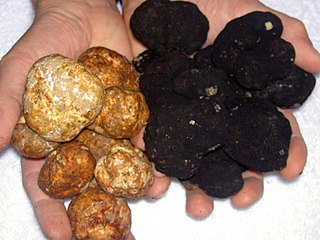Mushrooms, Uranium and the Stocking Factory
While most of the world lethargically yawns over the Iranian enrichment of uranium, Israel is relentless in its pursuit to stop the appeasement and the disastrous deal. Uranium, one of the world’s most expensive materials, is also one of the deadliest. With enriched uranium it is possible to make nuclear missiles.
Whether Israel has nuclear missiles is still a controversy with which some people obsess. In the heights of Israel’s Negev there is a massive sealed off complex which once had signs leading to it saying “stocking factory.” Word has it that it could be Israel’s nuclear power plant, but the Jewish state has never admitted it, and wisely so, because… why should we?
“Many learned men have unsuccessfully tried to discover the secret of the delicacy”
A few kilometres from this stocking factory is a product that Israelis are making that is four times as costly as uranium, and it has nothing to do with nuclear missiles, but everything to do with truffles.
The humble truffle is an historic food. The first mention of it is in a Neo-Sumerian inscription when the author bemoans Amorite eating habits! But truffles first became famous in France during the Renaissance. Due to their rarity, the truffle grew a reputation of being only food for the rich, and a luxury cuisine. A French lawyer noted that they were so expensive in Paris, that they appeared only at the dinner tables of great nobles.
It is said that many learned men have unsuccessfully tried to discover the secret of the delicacy, how to grow them or where to find them. A couple of hundred years ago Italians and French tried to grow it but without success. Botanical diseases, hungry sheep and goats, unsuitable soil and rainfall, all doomed attempts to cultivate the delicacy. Today the famous mushroom is still a highly desirable delicacy especially in the Middle East, Africa and beyond.
Until recently, truffles in Israel had been very hard to find but against all odds, Israeli farmers have been able to cultivate them by creating a symbiosis between the mushroom and a common desert shrub called the Desert Trap (or known in Hebrew as “the Sitting Samson”) which acts as host to the fungus. Most surprisingly of all, Israel has found a way to make the expensive truffle one of the cheapest crops to cultivate. The sturdy little Desert Trap that hosts the fungus requires barely any water or fertilizer. With so little expenses and investment needed, this makes the Israeli truffle as one of the most cost-effective agricultural crops.
“The sturdy little Desert Trap that hosts the fungus requires barely any water or fertilizer”
Until recently, it was the Bedouins who dealt with the sales of truffles. Unlike most Israelis, they knew where to find the Desert Trap. But the growth of the fungus was heavily influenced by the rains, or the lack of them, making the mushroom either impossible to find in the markets, or very expensive. The challenge for Israeli farmers was to develop conditions stable enough for both the Desert Trap and the truffles to grow where they were not dependent on the sparse rains or the Negev Bedouins.
After much perseverance the science has been mastered. The once-expensive delicacy that few could afford is now growing near the “stocking factory” and taken to the markets for all to enjoy: and it now doesn’t cost anything compared to the cost of a pound of uranium.





